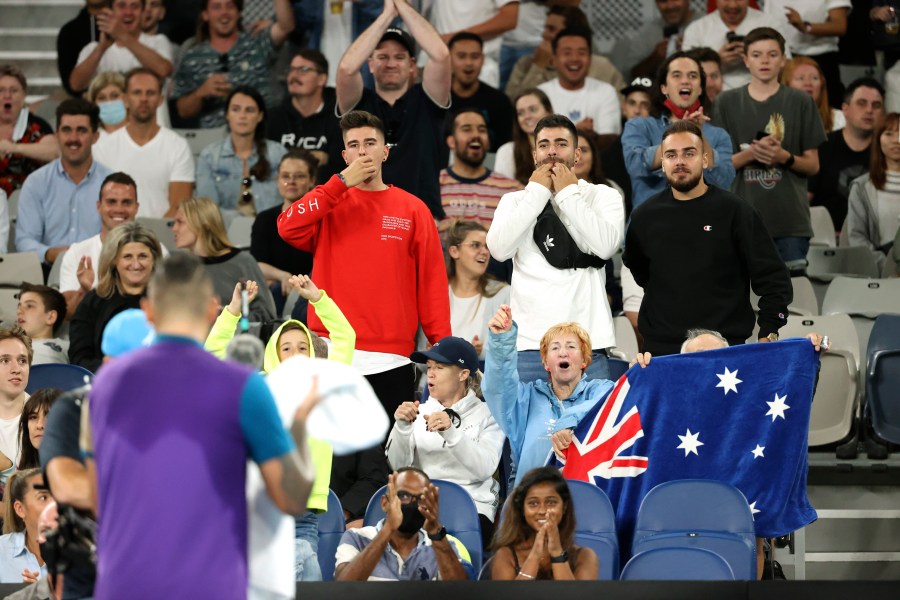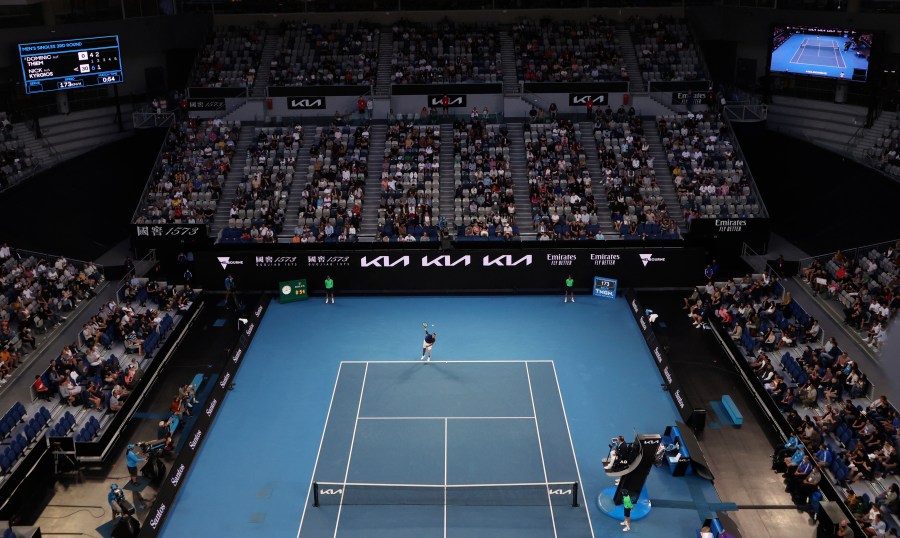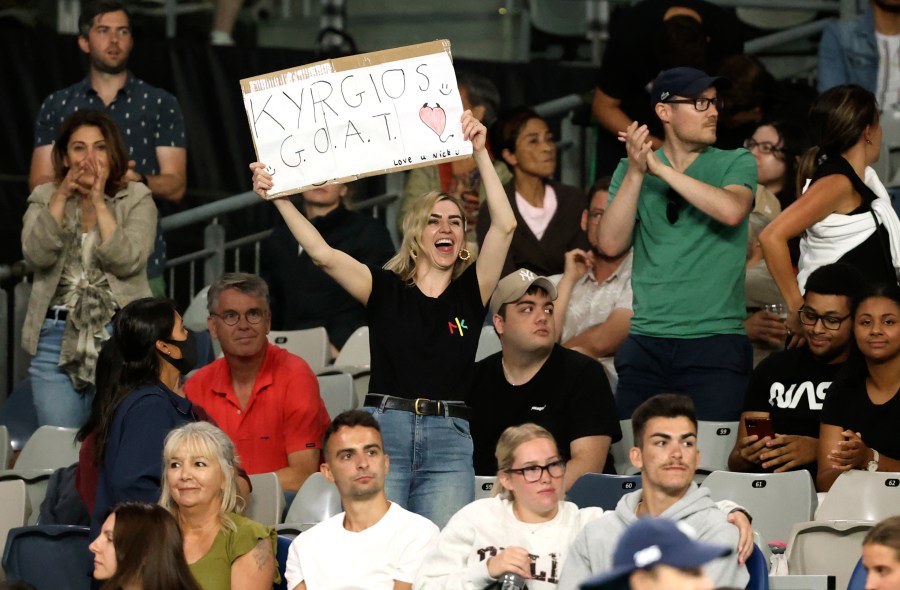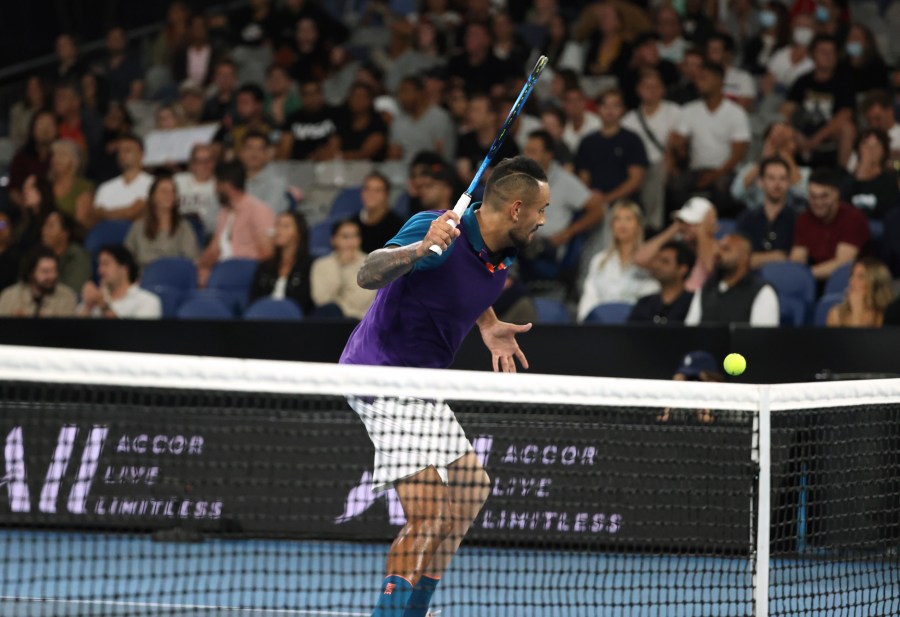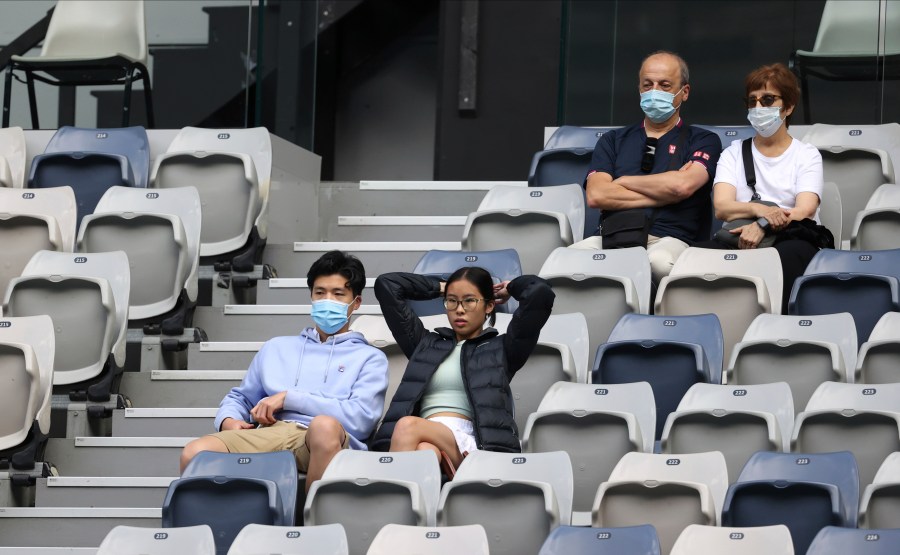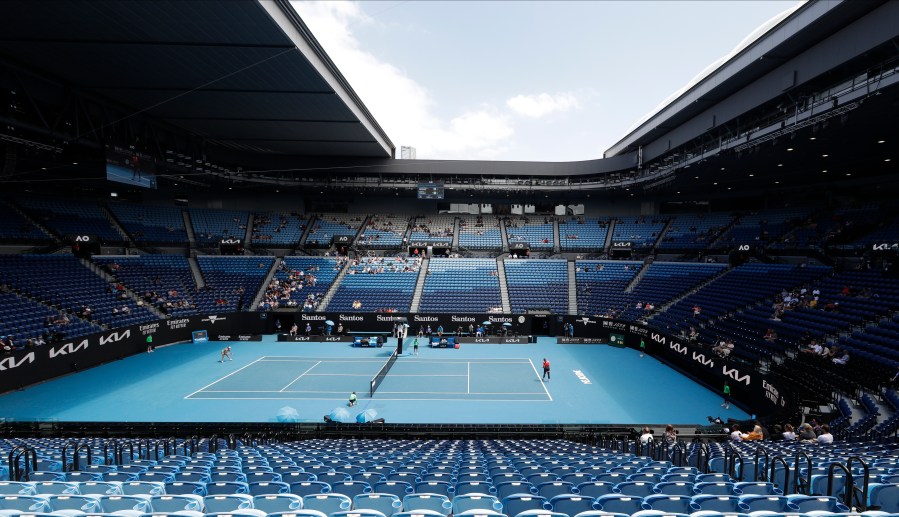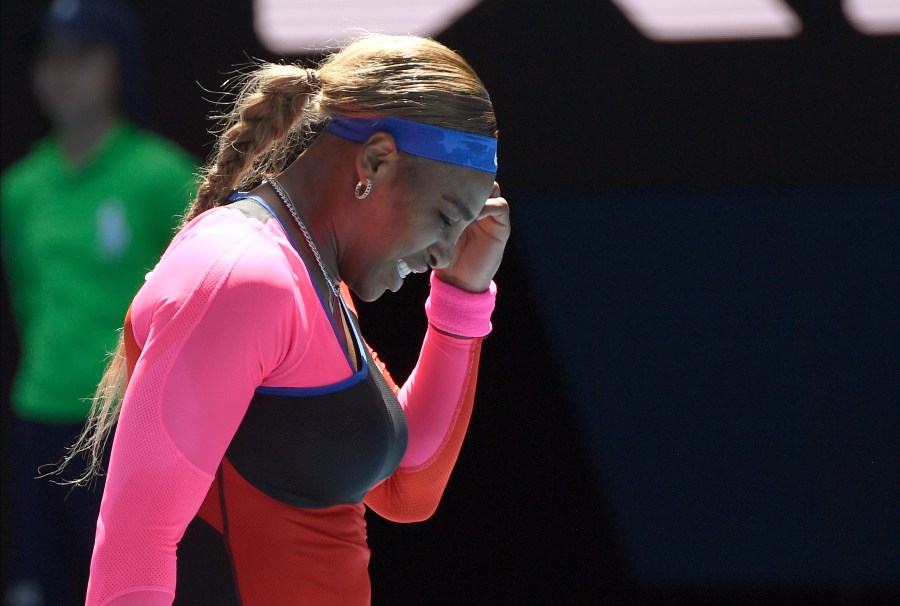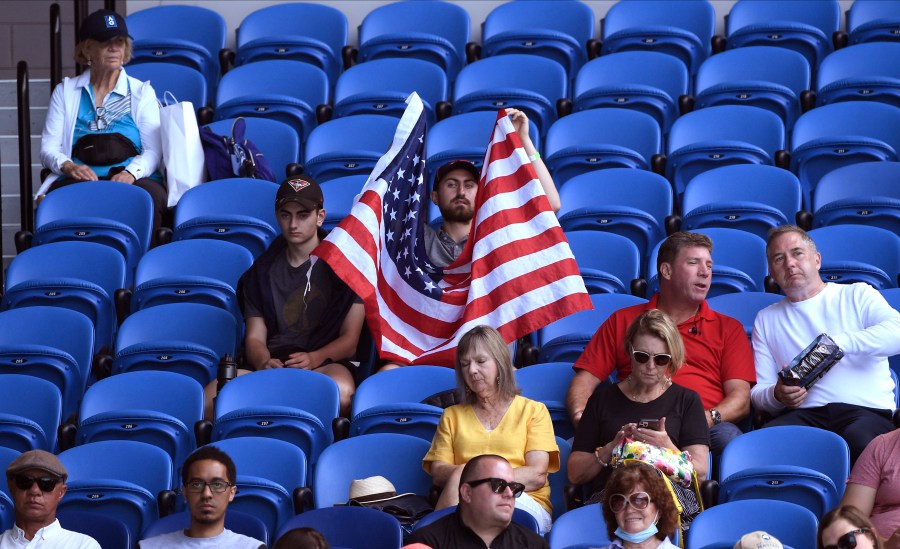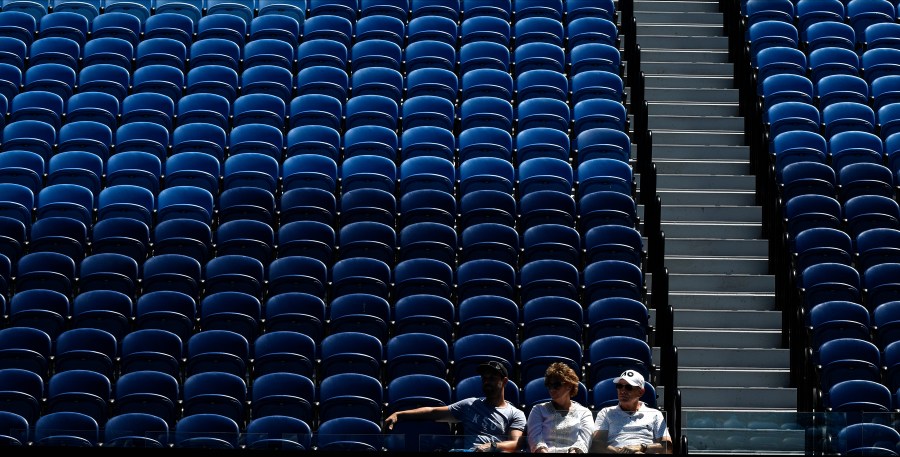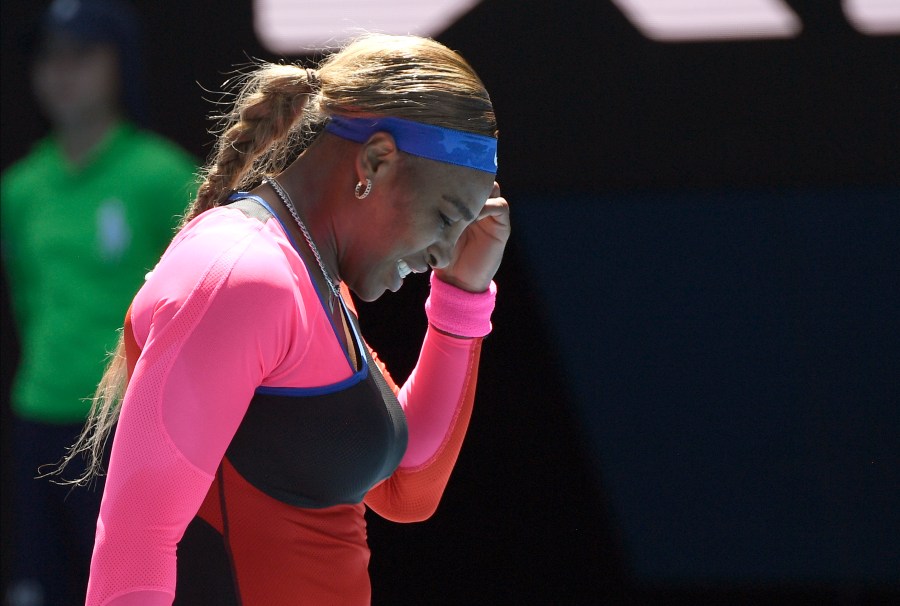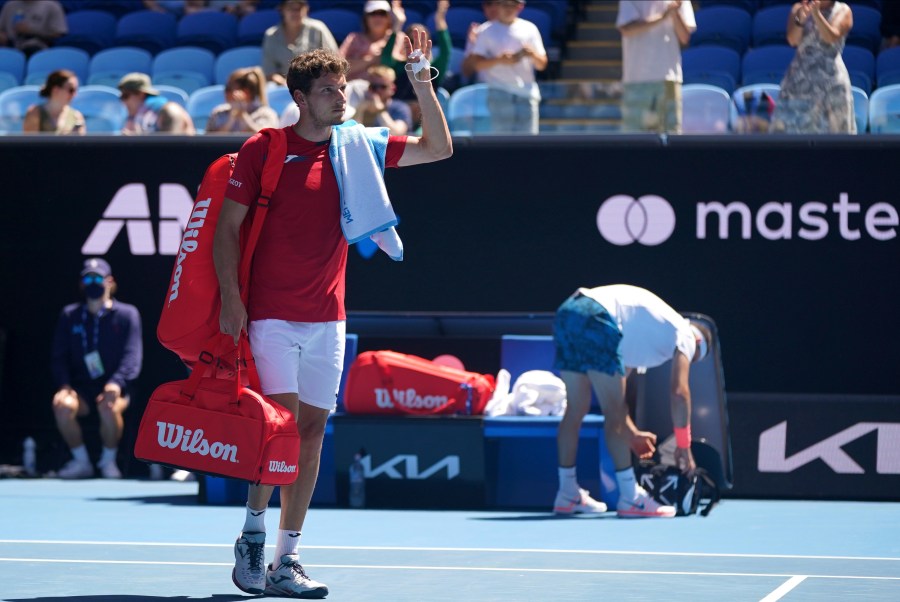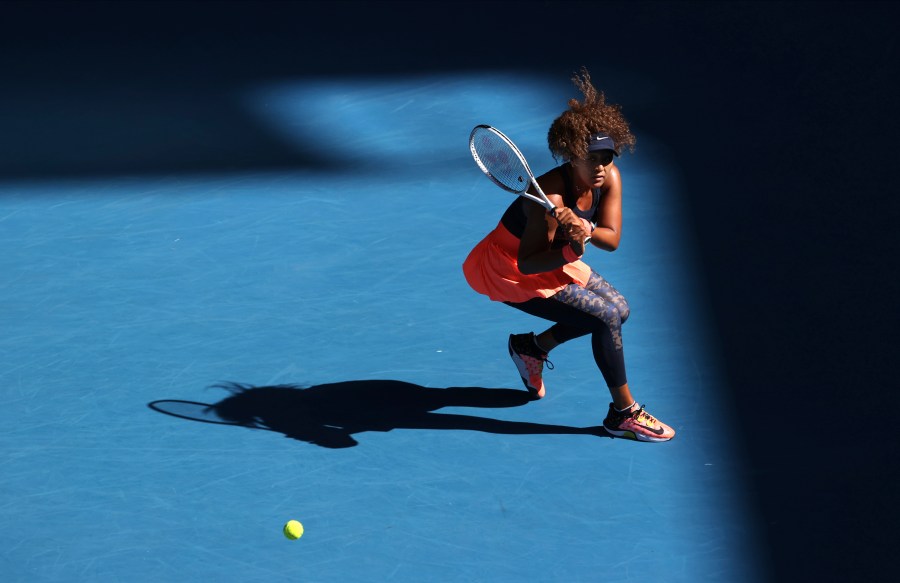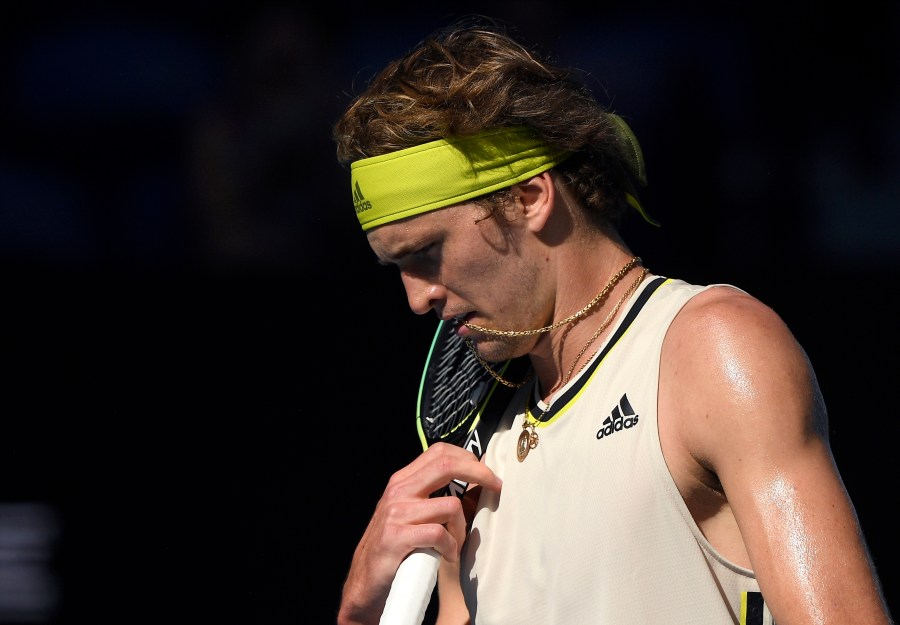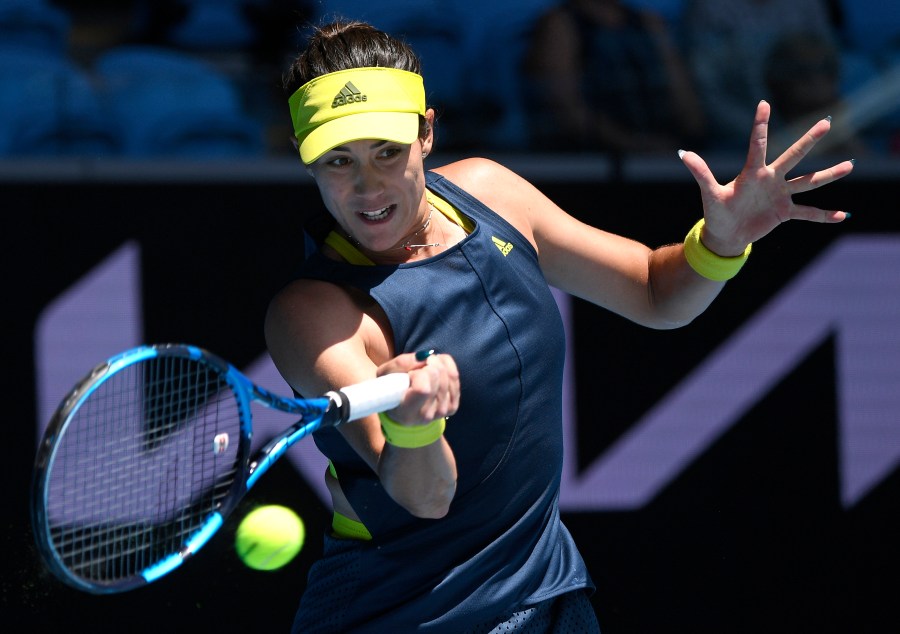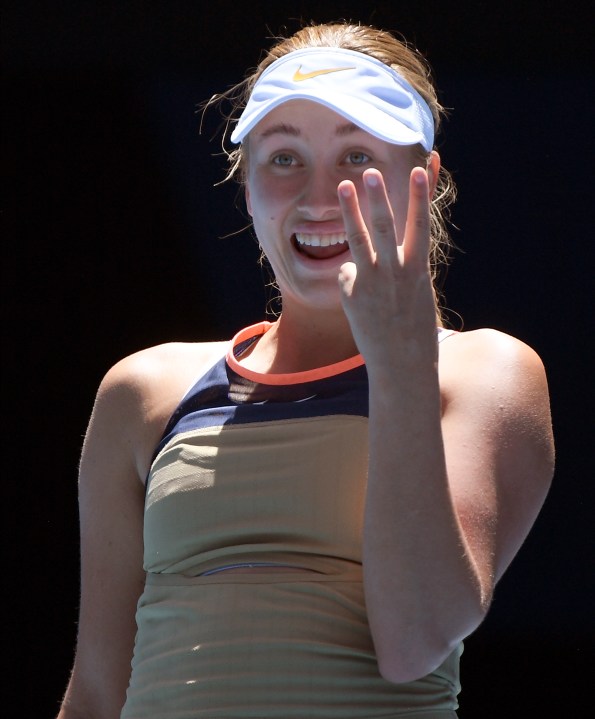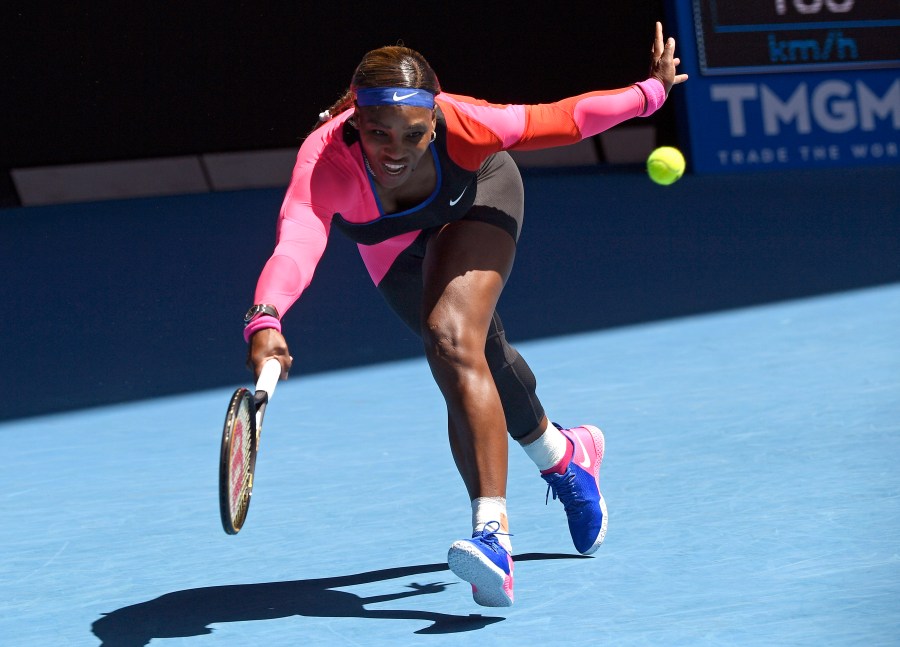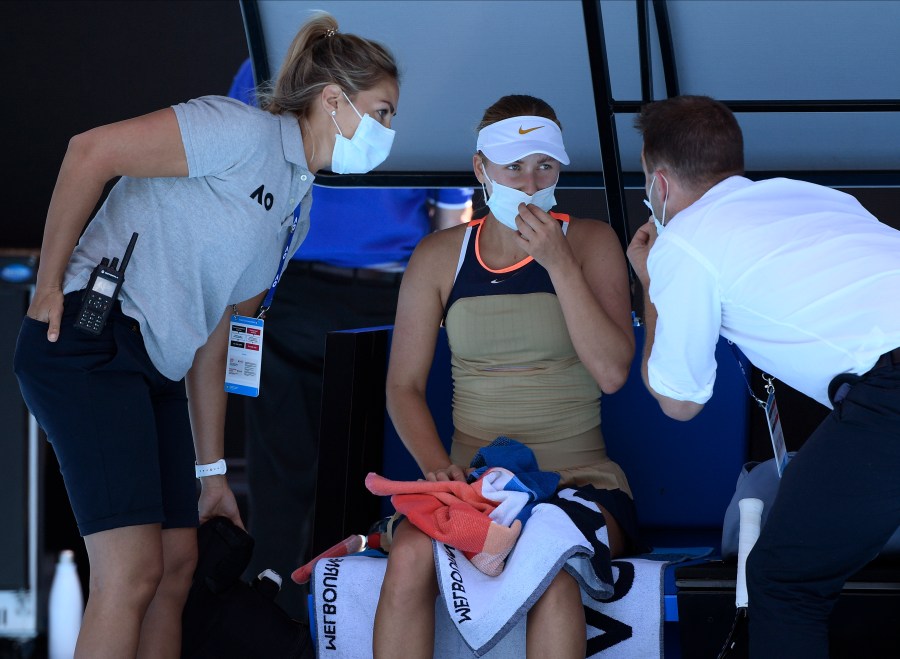MELBOURNE, Australia (AP) — The Australian Open will be allowed to continue but without crowds after the Victoria state government imposed a snap, five-day lockdown starting Saturday in response to a COVID-19 outbreak at a quarantine hotel.
Victoria Premier Daniel Andrews on Friday announced a state-wide lockdown starting a minute before midnight local time, imposing restrictions that prevent residents from leaving their homes except for work, to shop for essential supplies, for care or caregiving, and limited exercise.
Schools will be closed Monday through Wednesday, and there will be no gatherings permitted at homes or for sports events, weddings or religious services. Masks will be required everywhere.
Andrews said the Feb. 8-21 Australian Open could continue “because these people are at their workplace.”
“It will be happening, but there’ll be no one there watching it,” he said. “I don’t have advice to cancel the event on the basis that it’s unsafe.”
Andrews said the latest COVID-19 cases had nothing to do with the tennis quarantine program.
Organizers are hopeful of fans returning for the last four days of the tournament, including the semifinals and finals in the singles.
Australian Open tournament director Craig Tiley said the only people who will be permitted on site from Saturday through Wednesday will be the players and their direct support teams, as well as essential staff members not able to work from home.
“The feedback we’ve had from all the players is they just want to get on and play,” he said. “They’ve been playing in a bubble with no crowds for pretty much a year now, so the last five days (with crowds) have been a unique experience for them.”
Serena Williams was in the middle of her third-round win over Anastasia Potapova when the lockdown was announced. The seven-time Australian Open winner didn’t hear the news until after the match.
“I think it’s good that I didn’t know. . . . It’s going to be a rough few days for I think everyone,” she said. “It’s been really fun to have the crowd back, especially here.”
Grigor Dimitrov, who also advanced to the fourth round on Friday, said he feels fortunate the tournament is going ahead at all.
With “everything that has been happening, in a sense I feel like nothing can surprise me,” he said.
Even though Andrews urged people to “exercise good judgement” and not go out Friday night, hundreds of rowdy, boisterous fans packed into John Cain Arena for the match between local favorite Nick Kyrgios and third-seeded Dominic Thiem that ended close to 11 p.m. local time.
The crowd was jumping up and screaming for each of Kyrgios’ winners, booing close line calls and pounding the backs of seats in between points. There was little in the way of social distancing, and with masks not yet required by law, few people were wearing them.
“I always prefer playing in front of a crowd, even if they are not for me,” Thiem said of the atmosphere after the match. “It was a good last match before the lockdown, it’s really sad to say.”
The Australian Open was the first Grand Slam tournament in a year to allow sizeable crowds.
After the COVID-19 outbreak became a pandemic, Wimbledon was canceled, fans were not allowed at the U.S. Open and the number of spectators at the French Open was heavily restricted to 1,000 per day.
Under the initial plan for the Australian Open, the government allowed up to 30,000 people daily the first week at Melbourne Park, or about 50% of capacity. The biggest daily attendance in the first four days was 22,299 on Friday.
All players, staff and officials who arrived on charter flights for the tournament, a total of about 1,200 people, had to undergo a mandatory 14-day hotel quarantine. Of those, 72 were forced into a hard lockdown after being deemed close contacts of passengers who tested positive for the virus after landing in Australia, and were not permitted to leave their rooms for any reason.
Andrews said the new lockdown was a “short, sharp circuit breaker” in a bid to avoid a bigger, longer lockdown as the state combats a “hyper-infectious” strain of the coronavirus.
The cluster of cases linked to the hotel quarantine program at the Holiday Inn at Melbourne Airport grew to 13 on Thursday night, with five new cases emerging, including two household contacts of existing cases. These were the first cases linked with the cluster who had not been inside the hotel.
Australia has 909 deaths attributed to COVID-19, including 820 in Victoria state. Most of those were during a second deadly wave last year when a hard lockdown was put in place in Melbourne.
That lockdown lasted 111 days. All non-essential businesses and schools were closed, and residents were initially permitted to leave their homes for just an hour each day. A nightly curfew was imposed for weeks.
The extreme measures did succeed in stamping out the virus. Victoria had gone 28 straight days without a locally acquired case until early February.
Australia’s states and territories have also been quick to close their borders when outbreaks have occurred, which has also helped to contain the virus. Several states have announced border closures already for travelers from Victoria.
Last week, play in all six tuneup tournaments was suspended for a day after the worker in one of the tournament’s quarantine hotels tested positive for the coronavirus. That meant 507 people connected to the tournament, including 160 players, had to isolate and get tested for COVID-19. All of those tests returned negative.
Reporting by Justin Bergman. AP Sports Writer John Pye contributed from Melbourne. Trademark and Copyright 2021 The Associated Press. All rights reserved.

